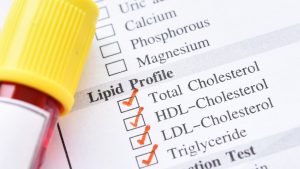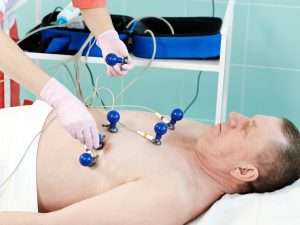What is Postural Orthostatic Tachycardia Syndrome (POTS)?
Postural Orthostatic Tachycardia Syndrome (POTS) is a chronic disorder of the autonomic nervous system that causes an abnormal increase in heart rate when moving from a lying or sitting position to standing. This sudden surge in heart rate can lead to a wide range of symptoms, including dizziness, fatigue, and brain fog. Although POTS is often diagnosed in adolescents and young adults, it can also affect children, significantly impacting their daily activities and quality of life.
Causes of POTS in Children
While the exact cause of POTS remains under investigation, several factors may contribute to its development in children. Current research and expert guidelines suggest the following possible causes:
- Neuropathic POTS
- Linked to small fiber neuropathy, where nerve damage impairs the constriction of blood vessels.
- Leads to reduced blood flow and symptoms such as dizziness upon standing.
- Hyperadrenergic POTS
- Characterized by an excessive release of norepinephrine (a stress hormone).
- Results in a rapid heart rate, palpitations, and occasionally high blood pressure.
- Hypovolemic POTS
- Associated with reduced blood volume (hypovolemia).
- Can cause difficulties in maintaining stable blood pressure, especially when changing posture.
- Autoimmune-Linked POTS
- Some children with autoimmune disorders may develop POTS.
- Suggests that immune system dysfunction may contribute to autonomic irregularities.
- Post-Viral POTS
- POTS may develop following a viral infection, triggering autonomic dysregulation in previously healthy children.
Symptoms of POTS in Children
Children with POTS can experience a variety of symptoms that vary in intensity. Common symptoms include:
- Dizziness or Lightheadedness: Especially noticeable when standing up.
- Chronic Fatigue and Brain Fog: Difficulty concentrating and persistent tiredness that interferes with school and play.
- Frequent Headaches or Migraines: Can be severe and recurrent.
- Heart Palpitations: A racing or pounding heartbeat, often triggered by minimal exertion.
- Gastrointestinal Issues: Nausea, bloating, and other digestive disturbances.
- Exercise Intolerance: Rapid exhaustion or worsening symptoms following physical activity.
- Sweating Abnormalities: Either excessive sweating or reduced sweating.
- Tremors or Shakiness: Involuntary muscle movements or tremors.
- Sleep Disturbances: Insomnia or poor sleep quality.
- Temperature Sensitivity: Intolerance to heat or cold, affecting overall comfort.
- Fainting (Syncope): Episodes of brief loss of consciousness.
These symptoms can disrupt a child’s ability to attend school, participate in activities, and maintain a normal lifestyle.
How is POTS Diagnosed in Children?
Accurate diagnosis of POTS in children involves several specialized tests, which may include:
- Tilt Table Test
- Evaluates changes in heart rate and blood pressure when the child transitions from a lying to an upright position.
- Considered one of the most reliable tests for diagnosing POTS.
- 24-Hour Holter Monitoring
- Records continuous heart activity over a full day to detect abnormal fluctuations in heart rate.
- Autonomic Nervous System Testing
- Assesses how well the nervous system regulates involuntary functions like heart rate and blood pressure.
- Additional Diagnostic Tests
- Echocardiography: Helps rule out structural heart abnormalities.
- Blood Volume Assessment: Determines if hypovolemia is contributing to symptoms.
- Vascular Testing: Evaluates blood circulation efficiency.
Treatment Options for POTS in Children
Although there is no cure for POTS, early diagnosis and a comprehensive, personalized treatment approach can help manage symptoms effectively. Treatment options may include:
1. Medication Management
- Symptom-Specific Medications: Depending on the child’s symptoms, medications may be prescribed to help regulate heart rate, improve blood pressure stability, or address other specific issues.
2. Lifestyle Modifications
- Increased Salt and Fluid Intake: Helps boost blood volume and improve circulation (always under medical supervision).
- Compression Stockings: Worn to enhance blood flow and reduce dizziness.
- Structured Exercise Programs: Gradually build tolerance through low-impact activities, as recommended by a pediatric specialist.
3. IV Fluids Therapy
- For children with severe dehydration or very low blood volume, IV fluids may be administered as part of a short-term management plan.
4. Physical Therapy
- Supervised Exercise Regimens: Tailored physical therapy programs can help improve cardiovascular conditioning and reduce POTS symptoms over time.
5. Nutritional Guidance
- Balanced Diet: Emphasizing whole foods and avoiding processed items, caffeine, and excessive sugars to help stabilize blood sugar and support overall health.
6. Psychological Support
- Counseling and Cognitive Behavioral Therapy (CBT): Provide coping strategies to manage the anxiety, depression, or stress that often accompanies chronic illness in children.
Conclusion
POTS can have a significant impact on a child’s daily life, but early diagnosis and a comprehensive treatment plan can help manage symptoms and improve overall quality of life. With proper medical management, lifestyle adjustments, and supportive therapies, many children with POTS go on to lead fulfilling, active lives. If your child is experiencing symptoms of POTS, don’t hesitate to seek help.
Schedule an appointment with The Heartbeat Clinic today for a comprehensive evaluation and personalized treatment plan tailored to your child’s needs, Contact us today!
Frequently Asked Questions (FAQs)
- Can children outgrow POTS?
Some children may experience a reduction in symptoms over time, especially with appropriate treatment and lifestyle changes. - Is POTS life-threatening?
POTS is generally not life-threatening, but if left untreated, it can significantly impair a child’s quality of life. - How is POTS different from ordinary dizziness?
Unlike occasional dizziness from dehydration or fatigue, POTS is a chronic condition marked by a rapid increase in heart rate upon standing, leading to multiple systemic symptoms. - What triggers POTS symptoms in children?
Common triggers include heat, dehydration, prolonged standing, stress, and recent illnesses. - Can exercise help children with POTS?
Yes, with a carefully structured and supervised exercise program, children can gradually improve their autonomic function and reduce symptoms. - Are there specific diets recommended for children with POTS?
A diet rich in whole foods with adequate salt and fluid intake, along with balanced meals high in protein and healthy fats, can help manage symptoms. - How long does it take to diagnose POTS in children?
Diagnosis can take several weeks, depending on the required tests and a thorough evaluation of symptoms. - Can emotional stress worsen POTS symptoms?
Yes, stress and anxiety can exacerbate symptoms, making psychological support an important part of treatment. - Is POTS genetic?
While POTS is not directly inherited, a family history of autonomic disorders may increase a child’s risk. - How do I get my child tested for POTS?
Contact The Heartbeat Clinic to schedule a comprehensive evaluation and diagnostic testing for POTS.
Disclaimer
This content is intended for informational purposes only and does not replace professional medical advice. Always consult with a qualified POTS specialist or pediatrician for an accurate diagnosis and personalized treatment recommendations.






